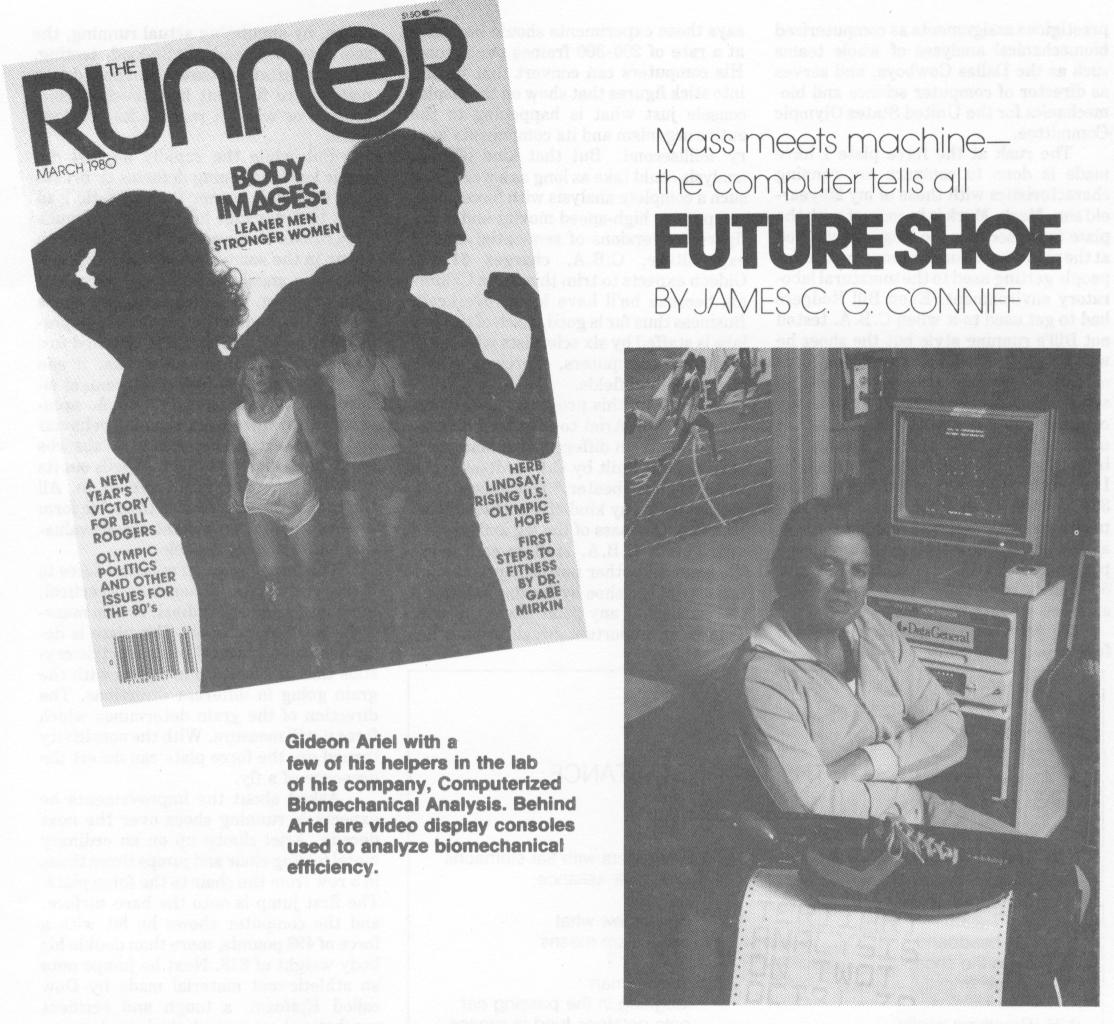| Index | Next |
![]()
At as much speed as I can generate in such close quarters, I pound up the wooden ramp onto the rectangularshaped force plate and across its hard white surface. By then, I am moving fast enough to crash into the laboratory wall, but Gideon Ariel reaches out and grabs me. We are conducting some experiments in the forces the body develops in motion. This lab is one of the most sophisticated anywhere for capturing, computerizing, analyzing and storing the data that emerge from what Ariel calls a "rapidly applied dynamic load."
Right now, I am the rapidly applied dynamic load under investigation. As running enters the 1980s, laboratories supervised by exercise scientists such as Gideon Ariel will be able to determine exactly what happens to runners' feet, their legs, their bodies and their running shoes when they run. A decade ago this
might have been mere Star Trek fantasy. But who ran then? Today, with the numbers of joggers and runners climbing beyond 30 million, everything about running-especially about running shoes-is big business. And in a biomechanical sense, exercise scientists, physiologists and podiatrists will tell you that we've barely scratched the surface.
The lab we are in is a storefront operation that jammed itself, back in 1971, between Radio Shack and Erik's Giant Subs on College Street in Amherst, Massachusetts. The sign out front says Computerized Biomechanical Analysis, Inc. Inside, the place hums with wall-towall electronics.
Gideon Ariel, a 6'2" Tel Aviv-born scientist with a Ph.D. in exercise physiology and extensive post-doctoral credits in computer science, got C.B.A. rolling by investing an estimated
10,000 hours over a seven-year stretch to devise the programs that tell his computers how to do the intricate things they do. Right now Ariel owns C.B.A., but he's thinking of going public in a few years. Besides athletic experience as a member of the Israeli discus and shotput teams at the 1960 and 1964 Olympics, he brings to his esoteric specialty expertise in the biomechanics of human performance, motor integration, cybernetics, and the physiology and biochemistry of exercise. His book, Optimum Body Power, will be published by Bantam.
Tying that force plate to the computer, programming the computer to analyze the body in motion and then interpreting the results are the guts of Ariel's work. With its West Coast companion, C. B.A.'s new multimillion-dollar Coto Sport Research Center at Coto de Caza near Los Angeles, Ariel takes on such
THE RUNNER March 1980

![]()
| Index | Next |